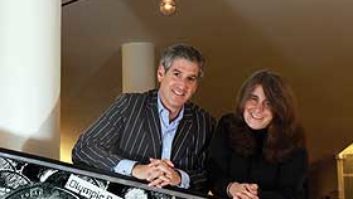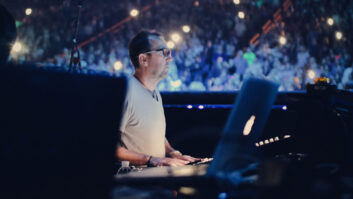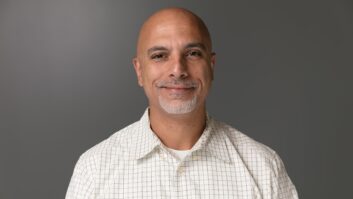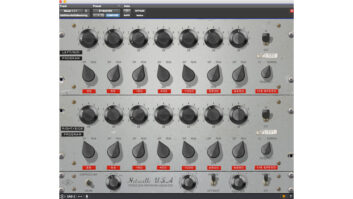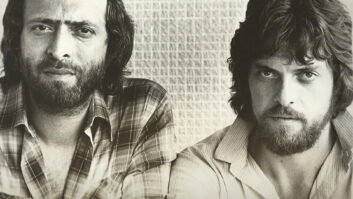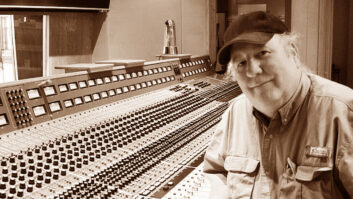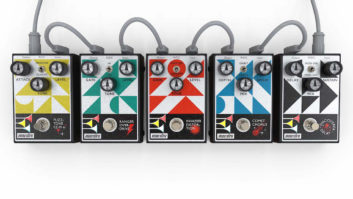A magnetic performer with a soulful and sometimes silken voice, the face of Adonis and total dedication to the power of music: That was Sam Cooke. He was also a songwriting genius, and a fine producer and businessman who cared to help young artists. Yet, with the exception of a few hits collections, Cooke’s legacy has never been celebrated properly. This year, Abkco has gone above and beyond to offer a definitive Sam Cooke reissue series: all of the original albums, plus a career-spanning retrospective that collects tracks from all of Cooke’s labels and styles for the first time, complete with incisive liner notes by Peter Guralnick. All of these glorious discs are hybrid SACDs, the format that producers Jody Klein and Teri Landi broke major ground with when they released Abkco’s Rolling Stones reissues last year.
“While finishing up the Rolling Stones remastered series,” Klein recalls, “Sam Cooke came to mind instantly as our next project, as his recordings have truly never been well-represented, sonically or historically. Naturally, we knew that Sam Cooke would be released on hybrid SACD. Besides the superior fidelity of these discs, there is the ‘secret element’ of SACD: It has an ability to play surround sound. So, of course, our thoughts turned to Sam Cooke at the Copa — it being a live performance — and how we could take advantage of surround sound. With At the Copa, we wanted to take the listening experience to a higher level, and the 5.1 surround sound SACD enables us to do that.”
So when the Stones project was completed, Klein and Landi had some pretty well-formed ideas about the way a Cooke collection could be presented. But they had to first find the master tapes. That research was largely performed by Landi, who meticulously discovered and authenticated the original source masters for each recording.
“It was a treasure hunt, without a doubt,” Klein says, “because in the ’50s and ’60s, they operated with the idea that they were making pop music that was disposable. They were not thinking that these were historically important recordings. The tapes go here, they go there. The recordings made outside of RCA Studios were a real adventure to find.”
“Part of authenticating is just getting the original releases,” Landi explains, “whether they were on Specialty or Keen or SAR or RCA, and making sure that we have the exact performance, because sometimes you’d have two or three versions of one song, and you want to make sure you have the one that got used. The single version and the album version sometimes did differ — a lyric here, a bass part there, or a mono vs. a stereo mix. You have to use your ears, because often these tapes have no information on them.”
Landi had a good deal of help from Steve Rosenthal, who works in his own Magic Shop Studio in New York City. Rosenthal is certainly no stranger to this type of work: In addition to recording projects with artists such as Björk, Lou Reed and Sonic Youth, in 2001 he opened a restoration and archive facility within the Magic Shop, where he over saw the archiving of the Stones reissues, as well as Rounder Records’ entire Alan Lomax collection (nearly 100 CDs), some Frank Sinatra reissues and the John Phillips archive.
“To play back the master tapes,” Rosenthal explains, “we spent quite a bit of time making sure that the alignments were correct, and that’s a real challenge, because sometimes we have tones and sometimes we don’t. Sometimes, we found a very specific alignment format they used for a short amount of time, and it was a real challenge to find out how the alignment curve worked. One such alignment curve was called AME.”
“That actually involved more than getting the alignment tape,” interjects Landi. “We had to acquire the physical cards for the machine designed for AME. We had to hire a retired RCA technician to make them, but he did it, and it worked, and it’s a good thing, because that was a big chunk of RCA material from the early ’60s.”
Playback for At the Copa was done on Abkco’s Mike Spitz-refurbished ATR-102 with Aria electronics. “It contains 3- and 4-track heads,” Landi explains, “but almost all of Sam’s stuff was recorded 3-track.”
As soon as the tracks were playable, Rosenthal employed a three-tiered backup system. “We transferred these tapes to three different formats,” he says. “One was an analog bump from 15 ips ¼-inch to 30 ips ¼-inch. We also did it to the new DSD format [SACD], and we made a 24/96 Sonic Solutions backup of each particular tape. I feel confident that in the next 50 years or so, this music will be in great shape.”
Not exactly glamorous work, but the engineer and producers’ attention to detail illustrates their commitment to historical accuracy and to the lasting beauty of the recordings. The Sam Cooke at the Copa is an excellent case study in their dedication to this material. At the Copa is a classic live album recorded when Cooke performed at the Copacabana for two nights in July of 1964. “Because of the technology, one is tempted to create a new record,” Klein explains. “We re-created not only the performance that was on original vinyl, but the setting in which it was performed. So we did a tremendous amount of research into the acoustics of the Copa, the size, where the musicians were. They also consulted with a number of the people who were familiar with Cooke’s live performances: Al Schmitt, the original producer on the album; Sam’s brother, L.C. Cooke; and Allen Klein, Cooke’s longtime friend and manager. Klein, a founder of Abkco, was at the club every night of the Copa engagement and, in the intervening years, has been the ongoing keeper of the flame, as far as maintaining Cooke’s place in music history.
“The idea I had was that the listener would be sitting at the front table,” Rosenthal says. He has particular insight into the nightclub scene, as he is the owner of The Living Room, the New York City nightclub where Norah Jones and Jesse Harris were discovered. “I don’t know if you’ve seen GoodFellas, but there’s a scene when Henry walks into the room and he pays everybody $20 bills and ends up sitting in the front watching Bobby Vinton Jr. playing Bobby Vinton. So, I wanted to know the room geometry. Oddly enough, there weren’t that many photos of the inside of the Copa; there were photos of people on-stage, but there were very few photos of what the room treatments were. So, I spent a lot of time trying to find out what the distance from the stage to the back wall was, because I was not into the idea of just using reverb in a sort of ad hoc way. After a lot of research, we found some answers, and I developed the surround sound mix according to those ideas, principles and numbers.”
The Copa performance includes a range of musical styles — ballads such as “When I Fall in Love,” the gospel standard “This Little Light of Mine,” the popular folk song “If I Had a Hammer,” and a medley of “Try a Little Tenderness,” “For Sentimental Reasons” and “You Send Me” — all brightened by a big band accompaniment. Rosenthal’s mix is nothing short of remarkable: The vocals, the horns, the ambience, the vibe — it’s all there. Rarely will you hear a live album that succeeds so well at being live.
“This may seem a little abstract, but the whole idea was really to re-create the space, not create an arbitrary space,” Rosenthal continues. “The Copa was a 3-track recording, so it’s a much more difficult situation than if you’re taking a 24-track master and making that 5.1. The producer Al Schmitt and the engineer Bernard Keville did an amazing job of balancing the record on the original multitracks. In those days, they were 3-track live recordings, so you have only one crack at it.”
Rosenthal mixes on a 30-year-old 56-input Neve. He uses mostly analog gear: LA-2As, Pultecs, Neve compressors, EMT stereo plates, and monitors on ATC 50s and Genelec 1031As. “These are analog recordings, and they deserve to be mixed on an analog console,” he says. “And then we go back to the Sonoma; that’s what the final 5.1 mixdown goes to. I think that for the first time with Sonoma and our Meitner filters and DSD technology, we’ve finally got this digital thing right. When we A/B analog sources to what comes back from the Sonoma workstation, we’re delighted. And then it travels to the wonderful Bob Ludwig. Bob is a genius. He brings an incredible, deep knowledge of music to every mastering project. His input is invaluable.”
To introduce the Sam Cooke Remastered Collection to the public, Abkco held old-fashioned listening parties in key cities, where the albums were presented in surround on the same ATC speaker system used during the mix. It’s all part of a mission to get people excited, not just about Cooke’s magnificent catalog, but about music in general.
“Most of the public is playing MP3s, so they’re going in the opposite direction,” says Rosenthal. “They’re listening to degraded audio, and we’re trying to make integrated, more high-quality audio. So, this is a tough road we’re on to get people into listening to music again in a high-quality way. I think the idea of offering them both layers [CD and SACD] at the same time goes a long way in helping the listener find this new audio format.
“What’s happened is the experience of listening to music has changed. It’s now part of your multitasking world. But when we had these listening parties, people sat there and actually found themselves listening to music again. Not sending two ways, not driving — actually listening to music. And when we got to At the Copa, people were just taken aback. In Chicago, they stood up and danced. It’s about the music again.”
